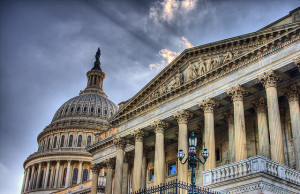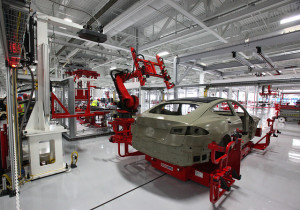By By Peter Ward October 2, 2015
Shell Exits Alaskan Arctic

Sea ice in the Alaskan Arctic © Stuart Rankin
On Monday Royal Dutch Shell ended its nine-year, $7 billion search for oil in the Alaskan Arctic.
The announcement was met with mixed responses. Environmentalists, who have sought to end Shell’s activities in the region for years, hailed the decision as a victory. But some in Alaska, including Governor Bill Walker, expressed their disappointment over the jobs, tax revenue and investments which could be lost as a result.
Shell’s efforts to find significant amounts of oil in the Alaskan Arctic have been held back by a series of accidents and blunders. In 2012 one of its drilling vessels was grounded in stormy seas, but despite the withdrawal of competitors such as ConocoPhillips and Statoil from the area, Shell carried on.
The project is the biggest casualty to date as the oil industry looks to cut back on investments due to collapsing oil prices. The oil sector has cut investments by 20% this year and has axed at least 200,000 workers worldwide, according to the New York Times. Oil companies have abandoned projects in less profitable areas such as the North Sea and West Africa.
Oil prices have slumped by more than 50% to below $50 a barrel since last summer, and the looming prospect of Iran’s oil re-entering world markets means the downturn could last well into next year.
Not all oil companies have been put off exploration activities in the Arctic, however, as the Italian company Eni said this week it was making final preparations on a $5.5 billion project in the Norwegian Arctic.
Congress Passes Government Funding Bill

U.S. Capitol © vgm8383
The U.S. House of Representatives kicked a familiar can further down the road on Wednesday night, passing a deal to fund the federal government through December 11 and avoiding a government shutdown by seven hours.
The bill was approved 277 to 151. Many conservatives, whipped into a frenzy by a heavily-edited, unverified video released by an anti-abortion group, wanted to use the bill to defund Planned Parenthood, an organization which provides affordable reproductive, maternal and child health services.
The Republican-controlled Congress did pass a separate measure to defund Planned Parenthood, but the vote was merely symbolic as the Senate is not expected to take any action on the bill.
Negotiations have already begun to reach a more long term agreement over government funding, but the resignation of House Speaker John Boehner last week caused infighting among Republicans, reducing the likelihood of any deal being made before December.
The White House released a statement praising Wednesday night’s decision, but warned of the dangers of failing to reach a long-term deal.
“With today’s bipartisan vote, Congress has taken a step away from the brink — and the President will sign the bill into law once he receives it,” the statement said. “But the American people deserve far better than last-minute, short-term legislating. That’s why Congress should pass a budget that reverses harmful spending cuts known as sequestration to allow for critical investments in our military readiness, infrastructure, schools, public health, and [research and development] that keep our companies on the cutting edge.”
Cost of Mobile Ads Revealed
The New York Times published an interactive on Thursday examining the cost of mobile advertisements on 50 news websites.
The Times measured the mix of editorial content and ads on the mobile news sites, and found that over half of data came from ads. The article features a number of interactive graphics, which show the full results of the studies, filtered by news organization.
The first tab on the main graphic shows how long each mobile website takes to load with ads, compared to how fast they load when an ad blocking software is used. Boston.com was found to be the most effected by ads. The website’s editorial content took 30.8 seconds to load advertising content, and 8.1 seconds to load editorial. That means the user pays $0.32 per page loaded for advertising content on Boston.com, and just $0.08 per page for editorial content.
The Blaze, The Daily Beast and The Independent were also found to have advertising content that cost the user more to load than editorial, although none were as imbalanced as Boston.com, which features a number of video ads.
Apple recently allowed ad blocking software on its iPhones, explaining that it allows users to browse websites faster and use less data.
Business Insider Sold
Business Insider, the eight-year-old media startup, was bought by German publishing company Axel Springer, it was announced on Tuesday.
Axel Springer, which owns German newspapers Bild and Die Welt, will pay $343 million for an 88% share of Business Insider. The company already owned 9%. The deal values Business Insider at $442 million – almost $200 million more than the Washington Post when it was sold in 2013.

Henry Blodget © Digitas Photos
Henry Blodget, the co-founder, editor-in-chief and CEO of Business Insider, will continue in his role following the sale.
Axel Springer has invested millions into online media companies as it looks to expand away from its traditional media offerings. The publisher has backed digital news startups such as Ozy, Mic and NowThisMedia in the U.S.
“Combining our forces will allow us to unlock growth potential and expand Business Insider’s portfolio to new verticals, new locations and new digital content,” Axel Springer chief executive Mathias Döpfner said in a statement.
In July Axel Springer attempted to buy The Financial Times, only to be outbid by Japanese company Nikkei at the last minute.
Tesla Unveils New Electric Vehicle

Tesla autobots © Steve Jurvetson
Tesla unveiled its latest electric car on Wednesday, a sports utility vehicle (SUV) costing up to $144,000.
The launch attracted widespread attention in the world’s media, perhaps in part due to last week’s Volkswagen scandal, in which the German automaker admitted to manipulating emissions tests on its vehicles.
Tesla CEO Elon Musk was quick to capitalize on the VW news, claiming the scandal means car manufacturers should move on to a “new generation of technology.”
Tesla’s new Model X can reach 60 miles per hour in 3.2 seconds, has a top speed of 155 miles per hour and its battery lasts for 250 miles – all of which represents a step up in electric car technology. The car has received outstanding reviews so far.
However, the cost of electric vehicles remains an obstacle. Tesla hopes its battery factory, or Gigafactory, currently under construction in Nevada, will help to reduce the price of its cars in the future.
This entry was posted on Friday, October 2nd, 2015 at 2:52 pm. It is filed under Week in Review and tagged with Alaskan Arctic, Axel Springer, Business Insider, government funding bill, Henry Blodget, mobile advertisements, Shell Oil, Tesla electric vehicle. You can follow any responses to this entry through the RSS 2.0 feed.
Comments are closed.
